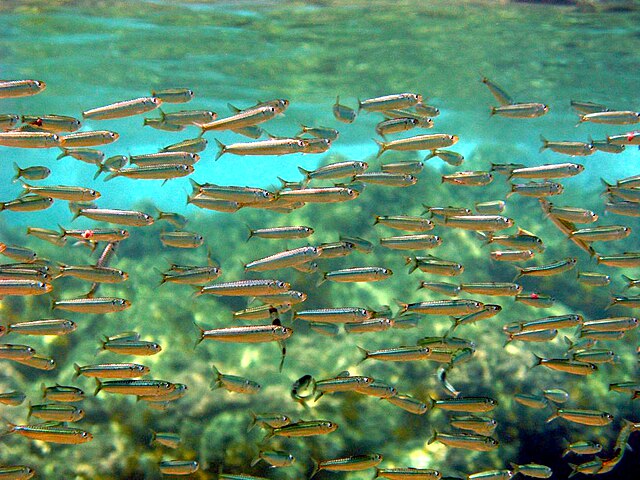A June 2025 United Nations Ocean Conference in Nice, France, could change depleting sardines fisheries of Atlantic Africa.
Organized by France and Costa Rica, the summit is “the final chance” to revamp the regional ocean population of small fish species. Their stock has barrelled downward since promises of the Lisbon conference of 2022 ran on empty.
Attending the conference are Senegal and Morocco, two classic examples of declining sardine fisheries.
Case Study Senegal
Massive home processing and exports of Senegal’s sardines and sardinella have historically helped plunge the ocean stock by about 90%.
By 2017, the country hauled only 7.49 million kg of sardines while in 1994 it had averaged 61.6 million kg.
Exacerbating the population pressure is the legal presence of boats from Russia, China and others that lease nearby waters.
Northward migration of fish inside Senegal’s Exclusive Economic Zone (EEC) also hinders some local boats from pursuit, benefiting foreign vessels.
Morocco’s Sardine Woes
Further north curves Morocco’s important Atlantic blue economy, which lands 80% of the total national fish output.
On top of this, some 14,000 direct employment opportunities come from this coastline, mostly dependant on sardines.
This lifeline currently hangs on the line from political tensions with the European Union (EU) hedged on export tariff possibilities. Notably, Morocco won a case at the Hague in 2024 not to include the EU’s interests in Western Sahara fisheries.
But the EU issue is not as dire as the fact that 25% of Morocco’s sardinella stock was down early 2025.
Rabat is also dealing with a domestic cartel issue that has been fixing sardines prices for the last 20 years.
The Competition Council on May 15, 2025 began official investigations on culpable organizations representing processors, boat owners and wholesalers.
Isolating around 15 stakeholder bodies, the council said that these organizations sometimes created artificial shortage to influence pricing.
By manipulating quotas, the organizations apparently not only distorted market rates but made competition all but impossible.
These are the kind of issues that could form the say of reps of Atlantic Africa sardines sector in Nice. The statistics section below continues the discourse by offering the real status of Northwest Africa’s sardinella.
Statistics on Atlantic Africa Sardines
Morocco and Senegal are some of the powerhouses of sardine production and trade in Africa. In Morocco, about 80% of the landings come from the Atlantic coastline, extending from Laâyoune to Dakla, according to Ecofin Agency. Most of this catch ends up making over 850 million kg of canned sardines for sale at home and abroad, each year. Senegal, in its part, relies on over 50 processing plants to can and export sardinella. This is despite sardine and sardinella production slumping nine-fold between 1994 and 2017, to 7.49 million kg per year.
Does Morocco lead worldwide sardines exports?
Morocco is the world’s biggest exporter of sardines, with a shipment average of 129.544 million kg, as of 2021. Exports of preserved or prepared sardines and sardinella generated approximately $459.8 million in 2021.
Is Senegal a major blue economy?
Blue economies capitalize on sustainability to generate income from ocean resources, and Senegal is one at least in financial terms. In Senegal, fisheries generate 2.3% of the GDP, as of 2019. Processing, which includes exports, represents 0.8% of this GDP share. In 2019, exports of all fish amounted to 318.485 million kg, worth 330.7 million CFA francs ($562,851). The Food and Agriculture Organization (FAO) puts the annual production average at 450 million kg, which supports 0.6 million jobs.
Are sardines a major export for Senegal?
Senegal ranks 39th in the world for prepared sardines exports, as of 2021, according to the World Bank. 2021’s exports clocked at 461,4423 kg, worth $1.114 million.
